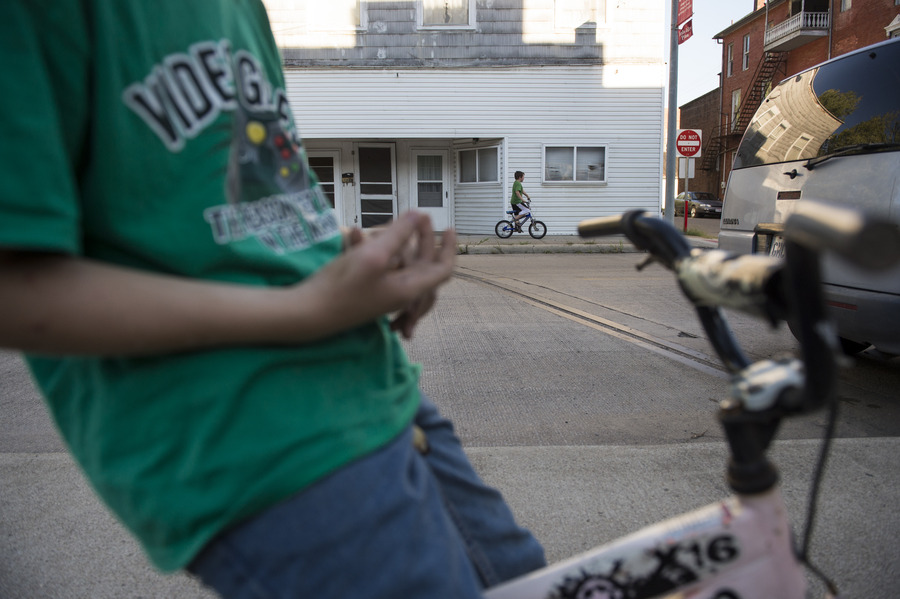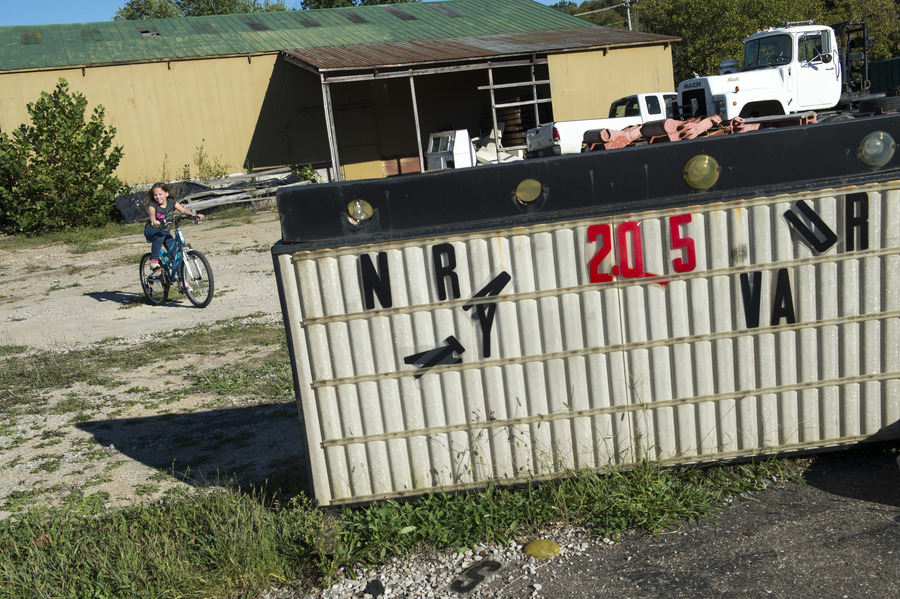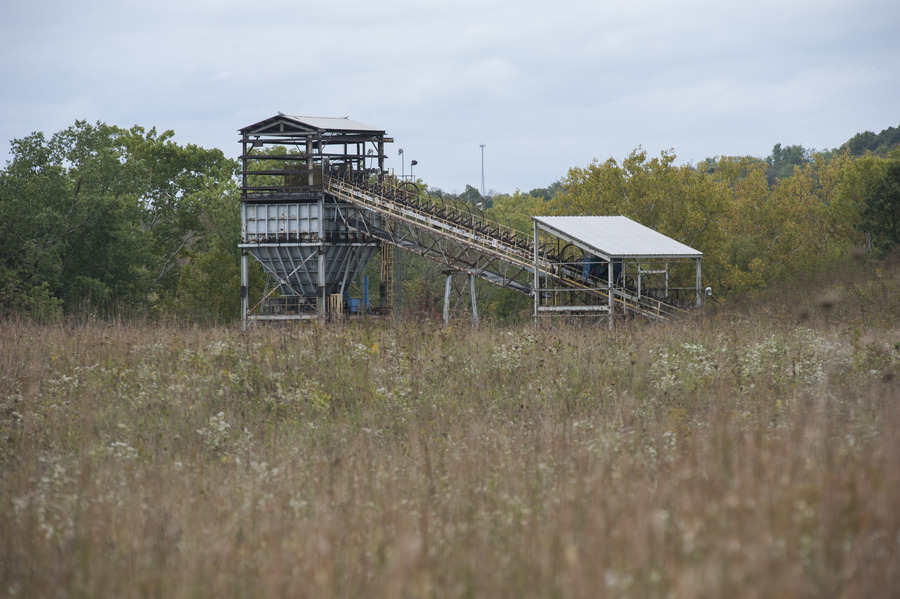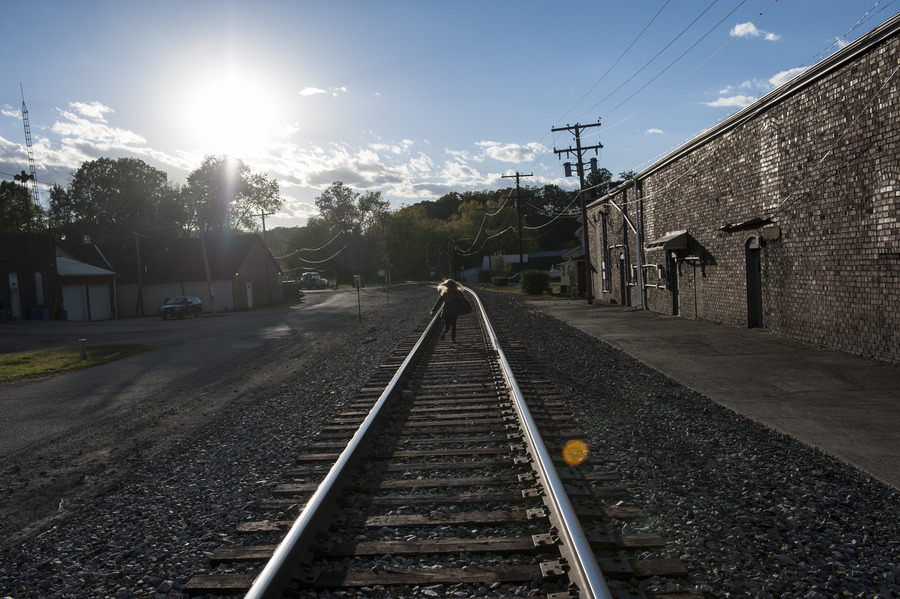Glouster used to be prosperous, but nowadays it is almost a ghost town due to many issues like unemployment, lack of public transportation and health care, drug abuse, etc. According to the City-Data website, residents in Glouster with income below the poverty level in 2013 are 28.2%, and the whole state is 10.6%. Children in Glouster below poverty level are 63.8%, and the whole state is 22.4%. Mostof the businesses on the main street of Glouster were shut down, firstly because these small individual businesses are not able to compete with big shopping centers like Walmart or Kroger. Secondly, the population has decreased. According to www.bestplaces.net, as of 2014, Glouster's population was 1,570 people. Since 2000, it has had a population decrease of 22.89%. However, Glouster used to be lively and busy, and cars would be parked on each side of the street.
There were 7 coalmines around Glouster, offering the most well paid jobs. The Federal Clean Air Act of 1970 and its amendments in 1977 (CAAA77) and in 1990 (CAAA90) placed stringent controls on the sulfur dioxide emissions from burned coal. Ohio’s coal production has steadily declined to about half of its 1970 level, several large underground mines have closed, coal companies have reorganized or downsized into smaller operations, some major companies have moved their operations from Ohio to other states, and stringent air-pollution-control legislation passed in 1990 (Ohio Department of Natural Resources). About 20 years ago, almost all of the mines were shut down. There is only one coalmine left now. This mine was sold without telling employees this January, which led to many workers losing their jobs.
Unemployment is one of the biggest issues in Glouster. According to City-Data website, the unemployment rate is 5.80% in 2013. This rate is not very high but with a job decrease of 0.96%. The economy has shifted; the coal industry moved out. The number of labor-intensive jobs that you physically learn skills to do, like agriculture or manufactory, have diminished dramatically. So unless people go to college or university, they are likely to stay at the minimum wage or a little above that income level, while everything else is going up, housing, food and transportation. Moreover, limited access to health care could also lead to unemployment. For example, if people don’t have good dental care or they have bad teeth, they are not able to work in public services. They may have to work in the back room. They cannot be a waiter or waitress and they cannot work in a restaurant. So if people don’t have good dental care because they aren’t able to afford it, they will be limited when they are applying for jobs.
Another issue is education challenges. The schools are funded through property taxes. In this area of the state, they are really hurting and struggling with not enough money. A teacher of high school gets paid much more in Columbus than in Glouster. The school system is very limited financially. 44% of the population in Glouster are only high school graduates,and the rate of people who haveahigher degree than high school is only 10%. Lack of educationcould also decrease the opportunity to find a job.
Then there is the digital divide, which is another problem in poverty. Kids have limited access to the Internet in Glouster because of the low speed of Internet in their homes. They do get to go to college. When they start their freshman year, they have a lot less experience with the Internet than everyone else. However, most people grow up with Internet, just like they grow up with electricity. It’s a normal thing, except in the rural communities. Some of the kids do not have access to the Internet, which is a major handicap for their financial and economic future. These problems are playing in the background of poverty.
Last but not least, lack of public transportation is also a big problem. Since there are no more jobs offered in Glouster, people are seeking jobs outside of the town, which created a need for transportation. But there is no public transportation in Glouster, and people have to rely on their own cars or even carpooling. The City-data website shows the average commute time of people in Glouster is 31 minutes, and the national average is only 25 minutes. Moreover, the rate of families who have no vehicle is 13.9%, 1 vehicle is 34.3%, and 2 vehicles is 32.5%. People are stuck there. They are dependent. Rural poverty is impacted very negatively by the lack of transportation. Teens can’t go out; they are often prey for drug dealers. There are a lot of petty crimes that involve stealing to get money for drugs.
In spite of all these issues, however, life in Glouster still goes on and people still care about each other. Many organizations have already paid attention to the dilemma. For example, Chix 4 a Cure hosted 7th year cancer walk around Trimble High School on Oct. 6. This walk has raised 70,000 dollars and this money helps pay for cancer related medical expenses for residents in Trimble Township. They also provide gas cards, which medical expenses and insurances don’t pay for, to help people get to their doctors appointment that located in Columbus, Lancaster, or even further in Cleveland. This kind of event and sports like football really bring this small rural community together.


Kids ride bikes on the main street of Glouster, Ohio, because there is not very much foot traffic.




An abandoned coal mining machine near Glouster, Ohio, with its components taken off and reused in another coal mine.

Dany Boyle, from Logan, Ohio, has been working in Buckingham coal mine for 11 years. “This is the most well paid job I can find arould here and it doesn’t need much education.” he said.






From left to right, Rainy and Butch Olbers hang out at a closed gas station. It was owned by Butch’s dad in the 1990s.



An abandoned school near Glouster, Ohio.

Michelle Kellar who has two foster care children. They are her 8-year-old nephew and 7-year-old niece. She has filed for full custody of them after her baby sister started using drugs (herion). Her baby sister ended up in prison and their dad in rehab. So Michelle has them at least for the next 3 years.


....








A pizza restaurant on S. High Street, which is the main street of Glouster, Ohio. No one eats in, but there are 6 employees working in the kitchen who mostly do delivery. Many businesses are shut down on the main street.

Ryan started working in the coal mine that is the only one left in Glouster in 2012. He was paid by 13 dollars per hour and that’s the most well paid job he could find in Glouster. His two fingers were cut to the bone by the machine in an accident. And his right ear was about to cut off in another accident. This January, Ryan lost his job because the coal mine was sold out without telling any employees.


The back door of electric and water department. it used to be the Glouster jail.




A girl uses an iPad to listen to music in the backyard of her home. Children have limited access to the Internet because of the low speed of Internet in their homes.





There is no public transportation in Glouster, and people rely on their own cars or even carpooling. Most can’t afford to repair any minor damages to their cars.



From left to right, Derek Lowry, Jakob McCoy, and Cody Braglin prepare for people to sign in for a cancer walk in Glouster, Ohio.

People participate in a cancer walk in Glouster, Ohio.


The Trimble High School marching band parades on the street of Glouster, Ohio.

People enjoy barbecue before the high school football game.

People enter Glouster Stadium for the high school football game. Football ties this town together.





People watch high school football game outside the fence because they don’t need to buy tickets this way.









Child jumps on a trampoline in his yard in Glouster, Ohio.

Cameron, on the left, lives with his aunt. His mother abused drugs and ended up in jail and his father is in rehab. He has been living with his aunt for 2 years.



People move into the house on the main street





A girl lost her phone in the gym, everybody stops to help her search.



